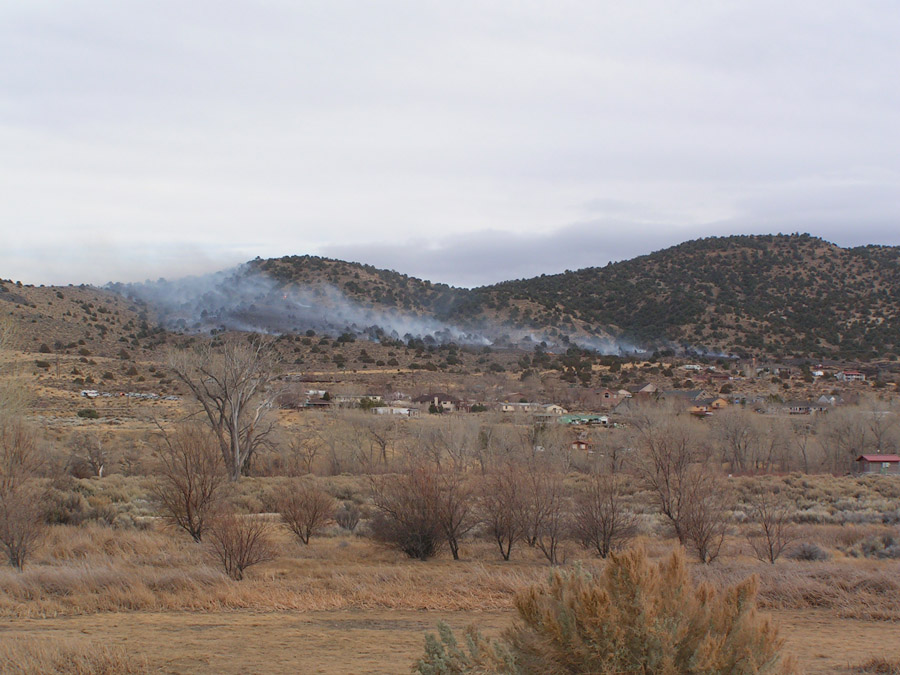Is Your Home Ember Prepared?
January 31st, 2012By JoAnne Skelly
Extension Educator, Carson City/Storey County
University of Nevada Cooperative Extension
The Deer Run fire two weeks ago in east Carson City and the November fire in Caughlin Ranch are reminders that we need to prepare our homes against wildfire. While these fire events are unusual for this time of year, we can’t get complacent once winter arrives and think, “Oh, fire season is over,” particularly when the weather has been so dry.

Is your home ember prepared? Will your home survive when (not if) the embers arrive? During a wildfire, thousands of embers can rain down on your roof and pelt the side of your home like hail during a storm. If these embers become lodged in something easily ignited on or near your house, the home will be in jeopardy of burning. Embers coming into contact with flammable material is a major reason why homes are destroyed during wildfire.
Common materials that become embers during wildfire include dry leaves, pine cones, branches, tree casino en ligne bonus sans depot bark, twigs and wooden shingles. Depending on fire intensity, wind speed and the size of materials that are burning, embers can be carried more than a mile ahead of the fire. Consequently, even homes located blocks away from the actual flame front are vulnerable to ignition and complete destruction.
By Being Ember Aware! and taking action ahead of time, a homeowner can greatly reduce the ember threat. Things to check as you ember prepare your home include:
- Replace wood shake roofs with fire-resistant types.
- Plug openings in roof coverings and cover attic, eave and foundation vents with 1/8 –inch mesh or install new vent types designed to prevent ember entry.
- Keep rain gutters free of plant debris.
- Routinely remove plant debris such as branches and needles from the roof.
- Replace plastic skylights with types constructed with double-pane tempered glass.
- Install an approved spark arrester on chimneys.
- Replace single-pane windows with multiple-pane tempered glass types.
- Replace wood mulches with noncombustible types and remove plant debris, including dried grass and flowers, dead leaves and branches from flowerbeds next to the house, other buildings and next to wooden fences and decks.
- Replace ornamental junipers with low-growing deciduous shrubs or flowers under irrigation.
- Maintain wooden fences in good condition and create a noncombustible fence section or gate next to the house for at least five feet.
- Move firewood stacks and scrap lumber piles at least 30 feet from the house or other buildings.
For complete information on increasing your home and property’s wildfire safety, download a copy of Fire Adapted Communities – The Next Step in Wildfire Preparedness or go to www.LivingWithFire.info.
